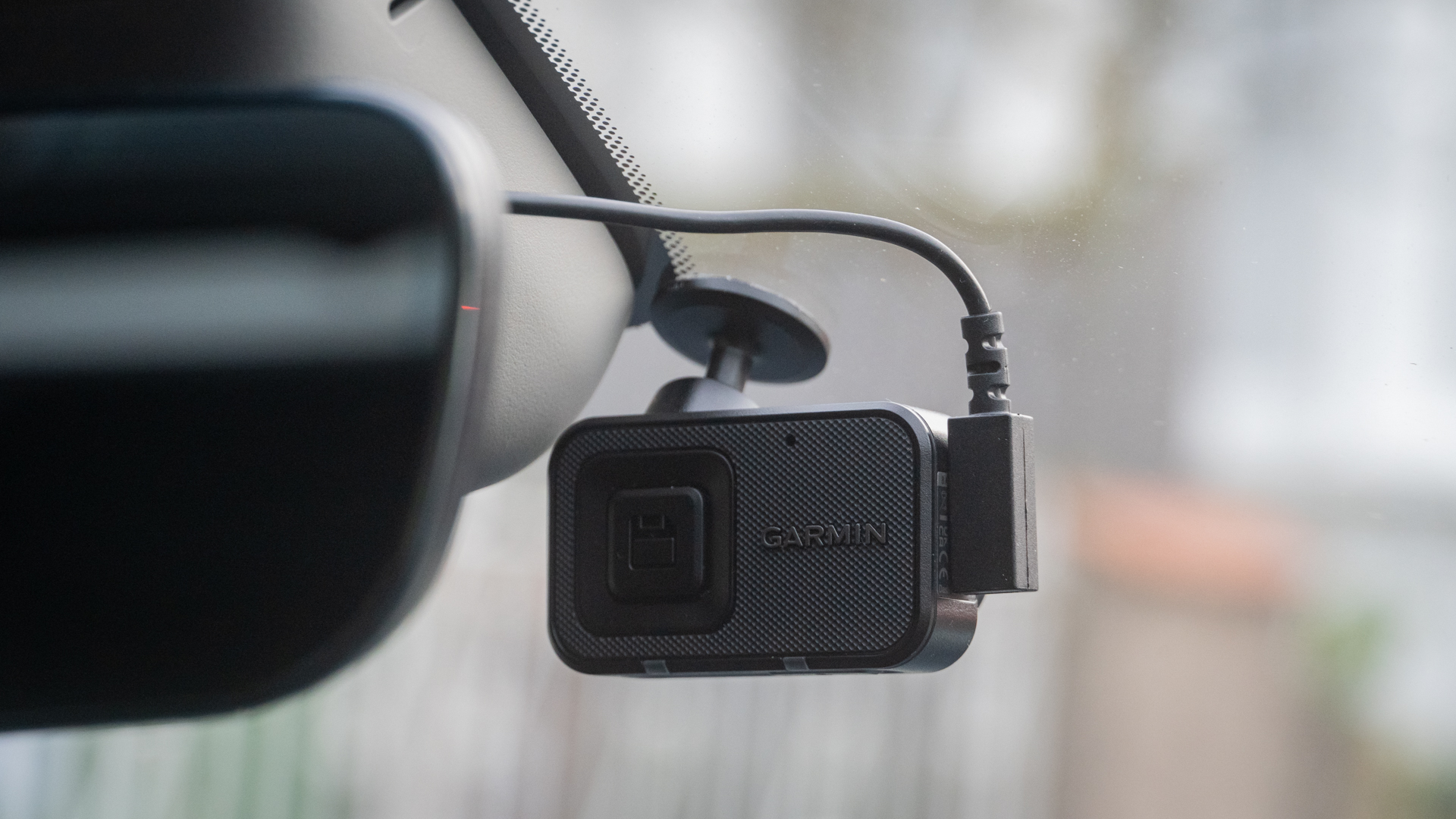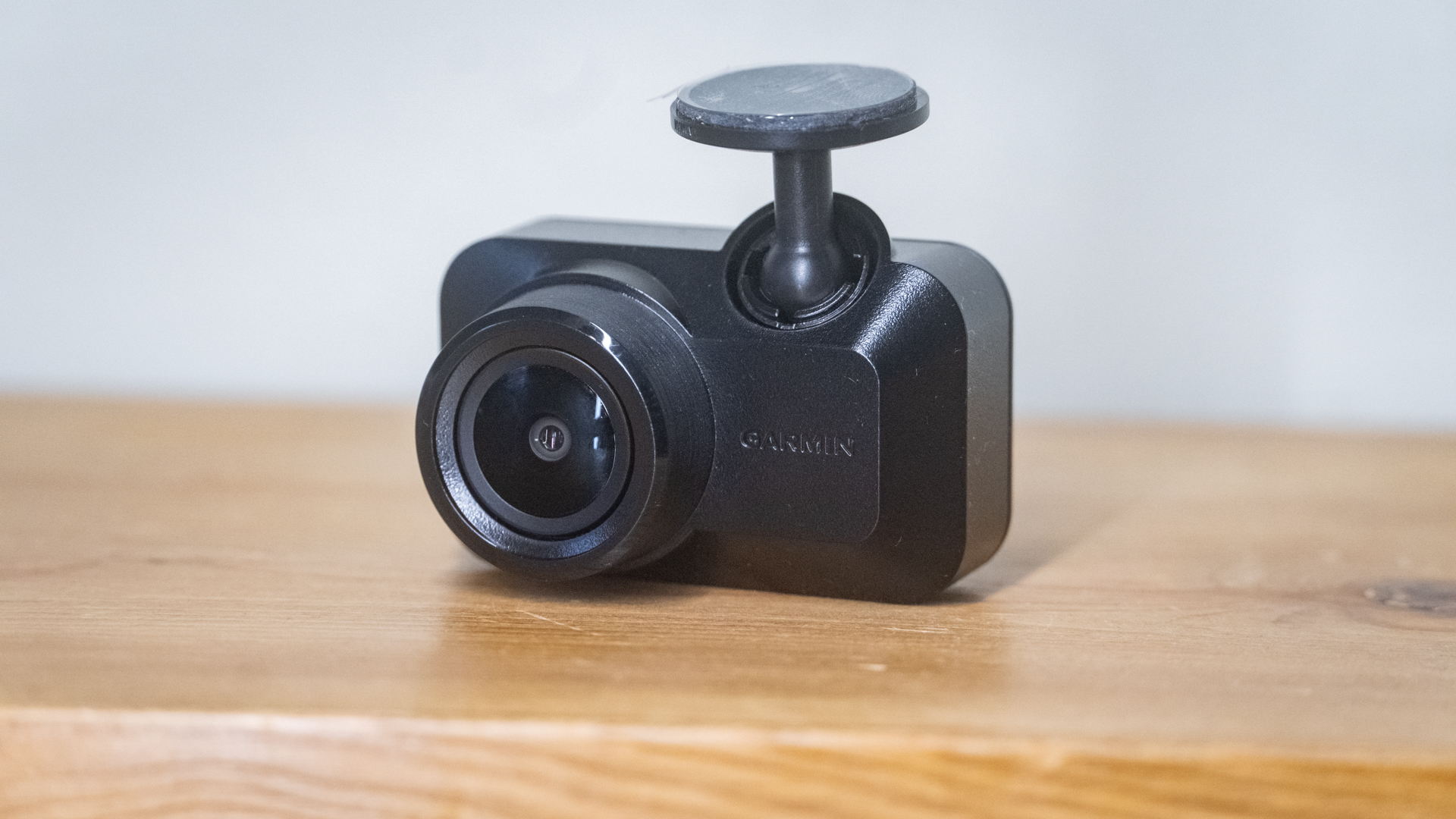
Now in its third generation, the Garmin Dash Cam Mini is one of the smallest dash cams you can buy.
The new model has been subtly redesigned for an even more discreet installation, while still packing Full HD video, voice control, and, new for this generation, an integrated polarizing lens filter designed to cut down on windshield reflections.
As ever for the Garmin Mini series, the new model has Wi-Fi to easily transfer recordings to the company’s free smartphone app, called Drive. A parking mode is also available, and there’s the option for live remote viewing too, but that requires a subscription and a data connection.
At $149.99 / £149.99, the new Mini 3 is a little more expensive than its predecessor, but still much cheaper than Garmin’s new flagship dash cam, the X310, which costs more than twice as much.
Is the Garmin Dash Cam Mini 3 the right compact dash cam for you? Read on to find out.

Garmin Dash Cam Mini 3: Specifications
Garmin Dash Cam Mini 3: Price
At $149.99 / £149.99, the third-generation Garmin Dash Cam Mini is £30 more than the Mini 2 was when it launched in 2021. The latest model justifies its price in isolation, thanks to a very compact design and high-quality video, but it only offers a couple of small upgrades over the older model, which can now be picked up for under $100 / £100. Readers should also consider the new Nextbase Piqo, which also records Full HD and costs $129.99 / £99.
Garmin Dash Cam Mini 3: Design & Handling
It’s as small as ever, but for the third generation, Mini Garmin has switched from a portrait to a landscape orientation. This doesn’t change how the dash cam functions, or the video it records, but it now takes up slightly less vertical space.
Drivers of smaller cars with shallow windshields will notice this more than others, and there’s more chance of this dash cam fitting entirely behind your vehicle’s rear-view mirror, making it also invisible and therefore distraction-free.
The Mini 3 is otherwise very similar to the previous two generations of Garmin’s smallest dash cam. There’s a lens on the front (this time with an integrated polarizing lens to cut down on reflections), a USB-C socket on the side, a button for manually saving footage on the back, and a ball-and-socket attachment for the included windshield mount on the top.

This mount is the same as before, giving the dash cam lots of adjustability while also holding it securely in place. The mount sticks to your windshield with an integrated adhesive pad, but unlike pricier Garmin dash cams – such as the equally new X310 – it doesn’t incorporate a magnet to easily switch between two vehicles.
Living up to its name, the Garmin Mini 3 measures 5.21 x 3.16 x 2.03 cm and weighs just 30g. A USB cable and a 12-volt adapter are included in the box, but there’s no microSD card, so you’ll have to provide your own. It supports cards with a storage between 8GB and 512GB, and Class 10 or faster.

Garmin Dash Cam Mini 3: Performance
Anyone who has used a Garmin dash cam for the last few years will immediately recognize how the new Mini 3 works. The setup process is completed using Garmin’s free smartphone app, called Drive. This lets you adjust settings like video resolution, impact sensitivity, and whether the microphone is on or off.
Or, the Garmin Mini 3 can simply be stuck to your car and left to its default settings, since it will start recording from the moment it is powered up for the first time.
As with the three-year-old Garmin Mini 2, the new dash cam records HDR video at 1080p resolution, also known as Full HD. It shoots at 30 frames per second through a 140-degree lens with an integrated polarizing filter, which helps to reduce windshield reflections. Aside from the filter, this is exactly the same specification as the Mini 2.
The result is footage that looks great. It’s sharp and stable, with plenty of detail and accurate color reproduction. The dash cam does a great job of handling varying lighting conditions, and the polarizing filter really helped to cut down on glare.
Garmin Dash Cam Mini 3: Verdict
The third-generation Garmin Dash Cam Mini is fantastic. It’s tiny, easy to install, set up, and use, and produces high-quality video with minimal effort. It also offers a range of options for upgrading the experience, including a parking mode with remote surveillance and automatic cloud storage.
Even if you don’t use these extra features, the Mini 3 still does a great job of recording footage and saving it securely, with bonus functions like voice control. The Garmin Drive app also works well and makes it easy to adjust settings and view or download video – crucial, since the dash cam itself doesn’t have a screen or a user interface.
However, the Mini 3 isn’t much of an improvement over its first- or second-generation predecessors. Those models are cheaper – plus the Mini 2 is still available to buy new – yet offer a very similar experience. A key difference is how the nearest model comes with an integrated polarizing lens, which helps to cut down on reflections.
Is that, and the optional remote view function (which requires a Garmin Vault subscription and a data connection) enough to justify the extra expense? If you haven’t owned a Garmin Mini before, then the third-gen model is a truly great dash cam. But, if you already have either of the previous two models, especially the Mini 2, and it still works fine,I recommend you stick with that and skip the upgrade this time.

✅ Buy it...
- You want the smallest dash cam possible. The Garmin Mini is properly tiny, with a design that helps it hide almost entirely behind your car’s rear-view mirror. This makes it a distraction-free solution, perfect for drivers who don’t want a dash cam display in their peripheral vision.
- You don’t want to be overloaded by features. Some dash cams try to do far too much, and as a result, can drift away from their primary objective. The Garmin Mini 3 keeps things simple and remains laser-focused on recording high-quality video with zero unnecessary features.
- You’re on a budget. While this isn’t a budget dash cam as such, it is more affordable than many other options from big names like Garmin, Nextbase, and Thinkware. It’s a little pricier than the older Garmin Mini 2 but delivers a top-notch dash cam experience at a broadly competitive price.
🚫 Don't buy it...
- You need a display. Clearly, this dash cam does not have a screen, so you have to transfer footage to your phone or computer to view it. Or, you can pay for a Garmin Vault subscription and have recordings automatically uploaded to the cloud. The lack of screen also means changing settings is done in the app, instead of on-device.
- You want driver assistance tech. Some dash cams alert you to speed cameras and even have forward-collision warnings but, in a bid to keep things simple, the Garmin Mini 3 does not. These functions are available from other members of the Garmin Dash Cam range, but for the Mini the name of the game is simplicity.
- You want a secondary camera. Unlike some other dash cam companies, Garmin doesn’t offer a dedicated rear- or interior-facing camera for its dash cam systems. Multiple Garmin dash cams can be synchronized together, which is a smart feature, but each requires its own power source, so this isn’t a viable option for some drivers.







